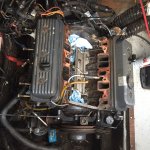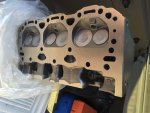Bimmerknut
Seaman
- Joined
- Oct 25, 2010
- Messages
- 71
I have a 351 Windsor in my '97 Fiberform. This boat sat for more than 2 years before I bought it a few months ago. I got the trim water pump rebuilt and the engine running fine with the exception of getting warm pretty fast. Upon further examination, 5 of the 6 freeze plugs are gone. I can get to the others but there are 2 on each side that are right behind the motor mount. Do I really need to pull the motor mounts to do this? If not, what the best method. If so, then what's the best way to secure the engine while the mount is remove and the plugs put in, doing one side at a time?






















